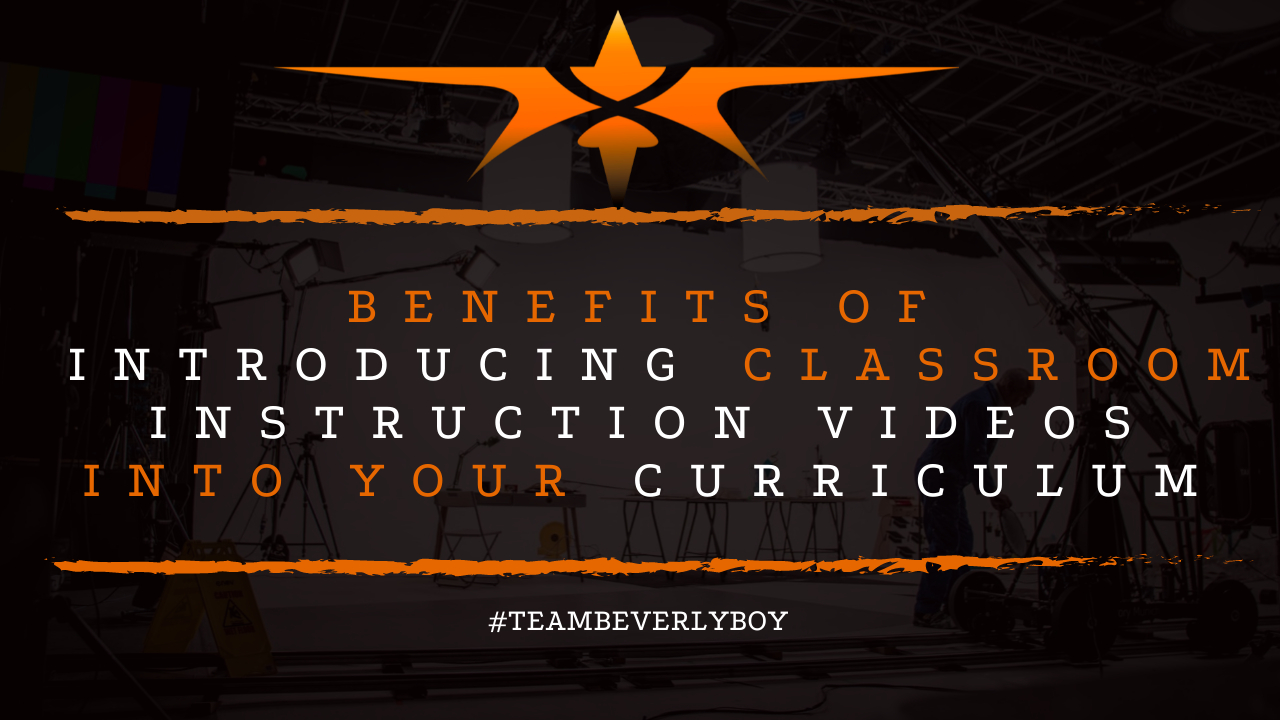
Benefits of Introducing Classroom Instruction Videos into Your Curriculum
Students, whether young or old, learn in a variety of ways and generally each have their own unique traits and learning styles about them. In any classroom, the decision to incorporate classroom instruction videos into the curriculum can have many advantages including increased learner engagement, stronger overall educational outcomes and improved retention. In fact, as a teacher, you can make student lives considerably better, and learning easier, by incorporating classroom instruction videos into your curriculum.

What the Research Shows
According to research, the use of video in the classroom can have several serious benefits for learners. Not only has use of classroom instruction videos in standard classroom settings been linked to increased cognitive results and stronger learner outcomes compared to the traditional lecture and textbook based teaching methodology, the use of videos has also been found to attract student attention in a way that no other teaching methodology can.
A study by Kaltura in 2019 found that 90% of teachers believed video would play a critical role in education. Additionally, a similar study found that 83% of teachers directly recognize the benefits of video use in their classroom. Project Tomorrow conducted a poll which found that 90% of district administrators find instructional tech to be a vital part of their abilities to achieve the core mission of educating students while parents not only agreed, but also 78% stated that the use of tech at school is necessary for children to develop college, career and citizen skills that are required for success as an adult.
Evidence-Based Benefits of Using Classroom Instruction Videos

The use of classroom instruction videos can have an incredibly positive impact on learners as is seen by the many evidence based benefits of using video in classroom instruction. The use of video in the classroom has the following proven, evidence-based benefits for students:
- Improved thought processing and problem solving.
- Stronger ability to master specific learning outcomes.
- Deeper engagement among students.
- Improved development of learner autonomy.
- Increased delivery of authentic opportunities to learn.
The use of video across the classroom has certainly grown in popularity thanks to the many benefits that come from the decision to incorporate video into everyday instruction. The improved student understanding and potential for stronger demonstrations of procedures that are necessary in order for students to master learning outcomes, makes classroom instruction videos a top consideration for teachers to incorporate into their existing curriculum and programs.
Teachers and principals that have already incorporated classroom instruction videos into the existing curriculum in their classrooms have found the following benefits for their students:
- Video increases student engagement by 75% or more.
- The use of video provides extended learning opportunities for students, including self-directed learning and remediation outside of the classroom for 72% of students.
- Instructional videos improve relevancy by 63%.
- 56% of principals found that the use of video in the classroom provides an opportunity for innovative instruction to be personalized for each student in the classroom setting.
- Increased use of video results in a decreased dependence on textbooks by at least 51% of students.
These and various other benefits have become commonplace in classrooms that actively utilize video as part of their regular curriculum standards.

How to Incorporate Classroom Instruction Videos into Curriculum
Teachers have the opportunity to incorporate classroom instruction videos into their existing curriculum in a wide variety of ways if they want their students to have the best chance at success. If you’re struggling to figure out how you can incorporate video into your day-to-day instruction, consider the following:
- Show videos at the start of instruction to introduce new topics or concepts.
- Show videos at the end of instruction to reinforce or complement topics or concepts.
- Provide video access to students online for improved accessibility on-demand and flexibility to allow students to view videos on their own schedules.
- Consider the use of video as a “flipped classroom” approach in which students first watch videos from home and then receive instruction in the classroom to support what they learned.
- Make videos that can be used as supplemental material inside and outside the classroom.
- Consider making video content the highlight of core subjects as students that regularly work with videos have higher overall competency than those who endure lecture-style instruction only.
- Use videos to support core coursework in major subjects such as science, math, social studies, and language arts.

With video being such a constant element in student lives these days, it’s only fitting to introduce classroom instruction videos into your curriculum in order to get student attention and to keep them focused on your lessons. Students will appreciate the technology, and they’ll be more likely to engage than if they were given instruction by way of textbook or lecture.
At Beverly Boy Productions, we specialize in producing top quality instructional video content including classroom instruction videos that can be used for a wide variety of educational opportunities. To learn more about producing classroom instruction videos that you can fit into your current curriculum initiatives, give us a call! We look forward to working with you & to producing a top notch instructional video for your students.


